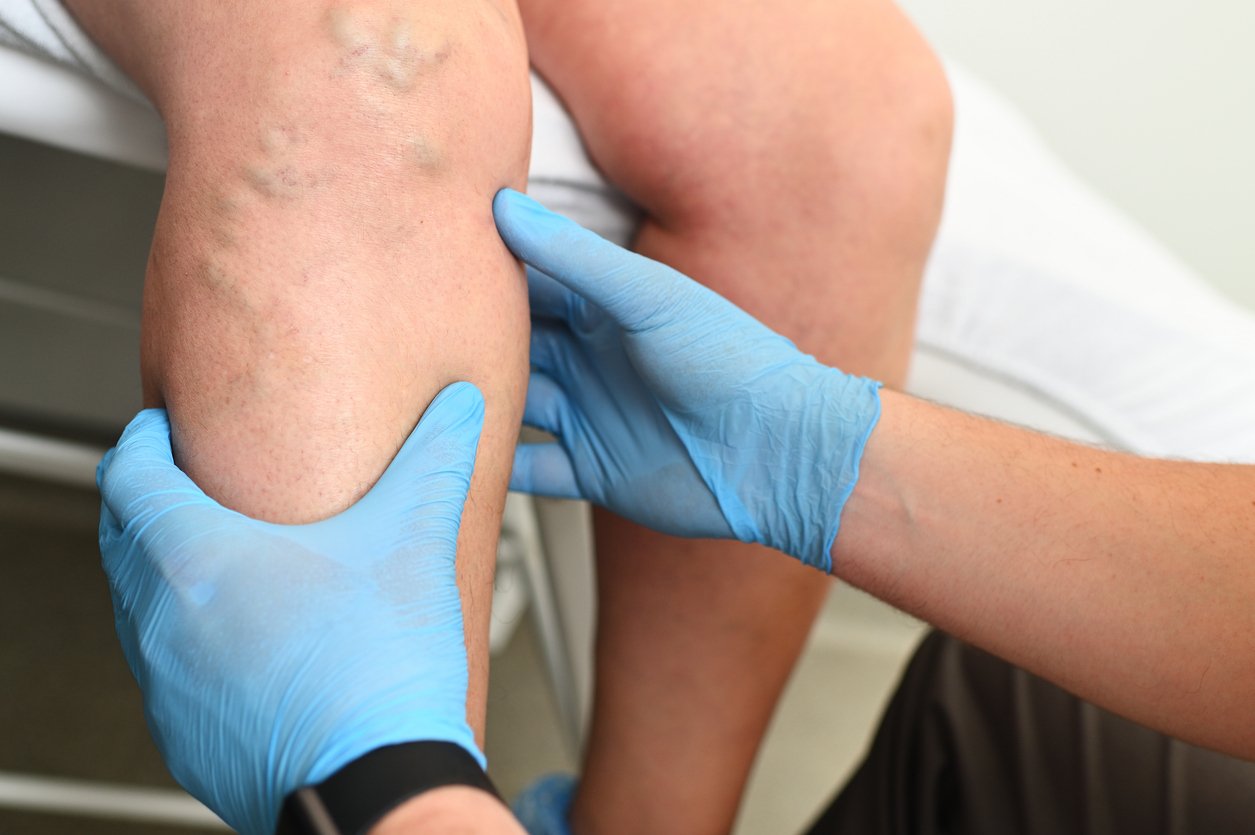
Correct selection of ICD-10-CM codes for peripheral vascular disease requires careful review of the index entries and instructional notes that guide the coding process. This Coding Tip aims to highlight key points in relation to determining correct codes and complete coding.
ICD-10-CM Coding
There are several things to know about assigning diagnosis codes for peripheral vascular disease that ensure correct coding as outlined below.
Peripheral Vascular Disease, Unspecified
When the diagnosis documented in the health record states only, “Peripheral vascular disease/PVD or peripheral artery disease/PAD, the ICD-10-CM Alphabetic Index directs the assignment of code I73.9 Peripheral vascular disease, unspecified.

Verification in the Tabular List shows that intermittent claudication and peripheral angiopathy, not otherwise specified, are also included in this code. The Excludes1 note under this code indicates that I73.9 is not appropriate for reporting peripheral vascular or arterial disease due to atherosclerosis. When PVD or PAD is documented as secondary to atherosclerotic disease the codes to report come from subcategories I70.2- thru I70.7-.

This is supported by advice in AHA Coding Clinic which clarifies that when interpreting an Excludes1 note, of the two codes being compared, only the code referenced in the Excludes note is assigned.
Atherosclerotic Peripheral Vascular Disease
When peripheral vascular or arterial disease is secondary to atherosclerotic disease, the Alphabetic Index directs the coder to “see Arteriosclerosis”.

Under the main term Arteriosclerosis, many subterms related to the arteries of the extremities, including the legs, send the coder to the subcategories of I70.2- thru I70.7. Index entries are differentiated by variables such as whether the diseased vessel is a native artery or bypass graft, manifestations of the disease (e.g., with rest pain and/or gangrene), site of ulcerations (e.g., calf, heel) and site of disease, including laterality, when the site is a leg(s).

As always, preliminary codes directed for use by the index should be verified in the Tabular List to determine correctness of code selection and if there are any instructional notes that must be applied before final code assignment.
Tabular List – Instructional Notes
The Tabular List has a few important instructional notes that must the applied to ensure coding for peripheral vascular/arterial disease is correct and complete.
- All subcategories from I70.2 to I70.7 have a “Use additional code, if applicable” note directing assignment of code I70.92 for any documentation of chronic total occlusion of artery of extremity. This instructional note directs sequencing, so code I70.92 is sequenced after the appropriate code to report the peripheral vascular/arterial disease.
- Some subcategories have an “Includes” instructional note which contains codes from preceding subcategories that report manifestations of “lesser severity”. For example, gangrene is considered to be the most severe manifestation of peripheral vascular disease, so codes for peripheral vascular disease with gangrene have an “Includes” note with codes for intermittent claudication, rest pain and/or ulceration. These notes indicate codes for PVD/PAD with gangrene include PVD/PAD with any and/or all of the lesser manifestations. Based on these notes, do not assign multiple codes to report PVD/PAD with multiple manifestations because codes for more severe disease are inclusive of less severe disease.
- Subcategories of codes reporting/including a manifestation of ulceration (I70.23-I70.26) have a “Use additional code to identify severity of ulcer (L97.- [for legs] and/or L98.49 [for other extremities])” note. This note also directs sequencing and specifies that the code assigned to report the ulcer is sequenced after the peripheral vascular/arterial disease code.
Example
A patient presents for atherectomy due to atherosclerotic peripheral vascular disease with rest pain and ulcer of the left midfoot.
ICD-10-CM Code: I70.244 Atherosclerosis of native arteries of left leg with ulceration of heel and midfoot. Based on the instructional note under subcategory I70.24, code I70.222 Atherosclerosis of native arteries of extremities with rest pain, left leg is not also assigned because PVD/PAD with a manifestation of rest pain is included in the code for PVD/PAD with ulceration.
An appropriate ulcer code from category L97 would also be assigned.
Peripheral Vascular Disease and Diabetes
In ICD-10-CM, diabetes and peripheral angiopathy are linked by the term “with” in the Alphabetic Index.
%20(sugar).png?width=359&height=106&name=Diabetes%2c%20diabetic%20(mellitus)%20(sugar).png)
This means that for diabetic patients with peripheral angiopathy, combination code E11.51 Type 2 diabetes mellitus with diabetic peripheral angiopathy without gangrene, should be assigned. Coding Clinic confirms that peripheral arteriosclerosis, peripheral vascular disease and peripheral arterial disease are forms of angiopathy and should therefore, in a diabetic patient, be linked and coded as diabetic peripheral angiopathy.
Key Takeaways
- A diagnosis of peripheral vascular disease, intermittent claudication or peripheral angiopathy with no further specification is assigned to code I73.9 Peripheral vascular disease, unspecified
- For a diagnosis of peripheral vascular disease with gangrene, only the code for peripheral vascular disease, unspecified (I73.9) is assigned.
- Codes for arteriosclerotic peripheral vascular disease are classified by several variables including: type of vessel, manifestations of the disease, site of ulcerations and site of disease including laterality when the site is a leg(s).
- Locating and following instructional notes in the Tabular List is essential to coding that is correct and complete.
- Codes for arteriosclerotic peripheral vascular disease with more severe manifestations are inclusive of peripheral vascular disease with less severe manifestations.
- Documentation of peripheral vascular disease in a diabetic patient is coded as diabetes with peripheral angiopathy.
For more in-depth instruction in diagnosis code assignment for peripheral vascular disease see HIAlearn’s eBook Peripheral Vascular Disease Coding in ICD-10-CM.
For instruction in outpatient coding of procedures used to treat peripheral vascular disease please visit HIAlearn’s course Endovascular Revascularization of Lower Extremities Coding in CPT.References
- ICD-10-CM Codebook
- Coding Clinic for ICD-10-CM/PCS, Fourth Quarter 2018: Page 87
- Coding Clinic for ICD-10-CM/PCS, Second Quarter 2018: Page 7
- https://my.clevelandclinic.org/health/diseases/17357-peripheral-artery-disease-pad
- https://www.merckmanuals.com/professional/cardiovascular-disorders/peripheral-arterial-disorders/peripheral-arterial-disease?query=peripheral%20arterial%20disease
For more than 30 years, HIA has been the leading provider of compliance audits, coding support services and clinical documentation audit services for hospitals, ambulatory surgery centers, physician groups and other healthcare entities. HIA offers PRN support as well as total outsource support.
The information contained in this coding advice is valid at the time of posting. Viewers are encouraged to research subsequent official guidance in the areas associated with the topic as they can change rapidly.
Subscribe to our Newsletter
Recent Blogs
Related blogs from Industry News , Medical Coding Tips
Complex coding scenarios often lead to delays...
Provider documentation is the foundation of a...
Accuracy is the foundation of quality coding....
The 2026 updates to CPT and the Hospital Outp...
Subscribe
to our Newsletter
Weekly medical coding tips and coding education delivered directly to your inbox.


.png)



